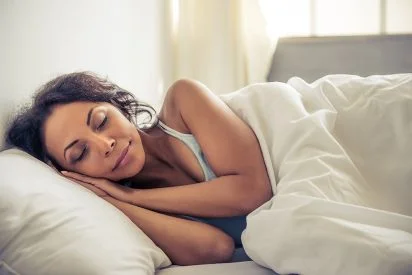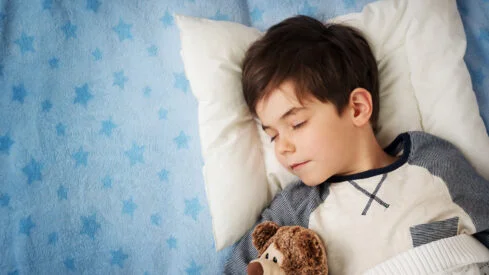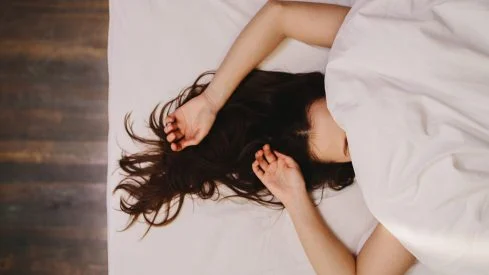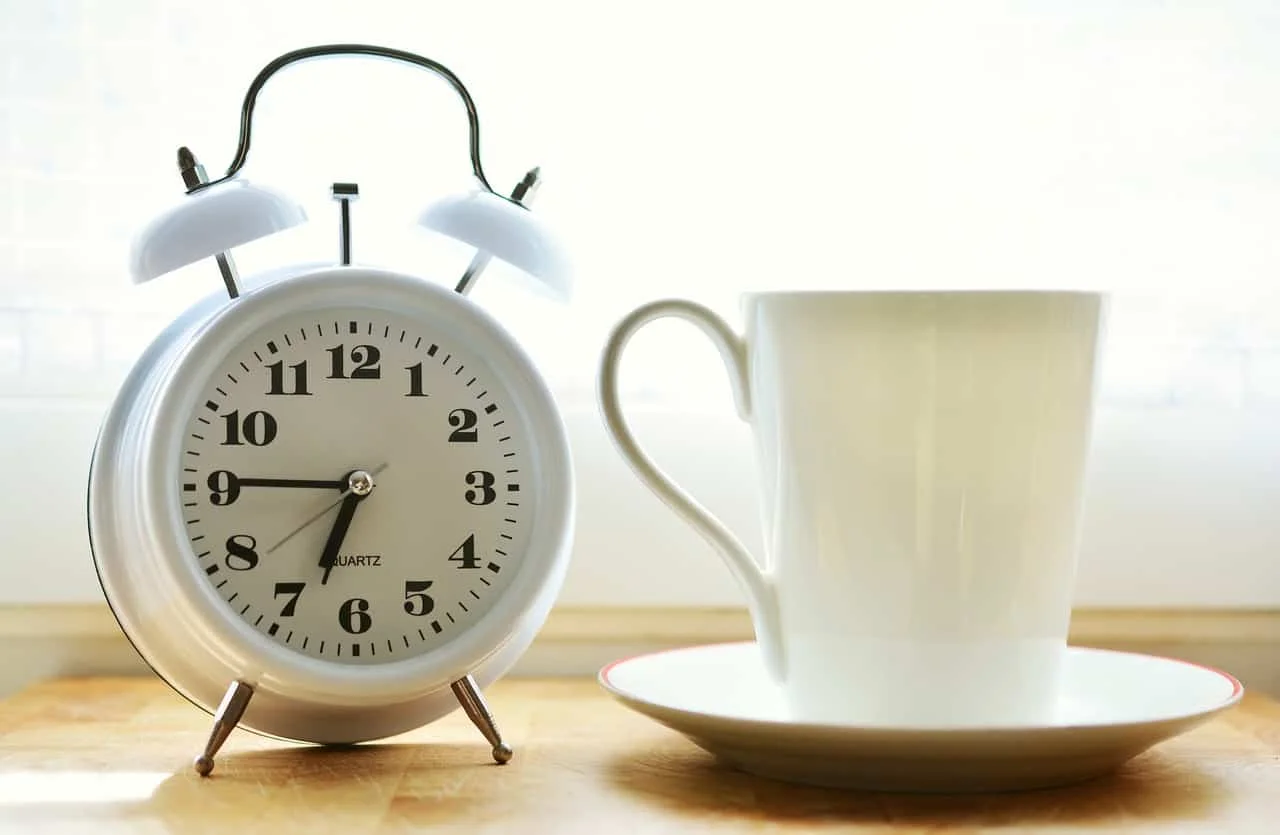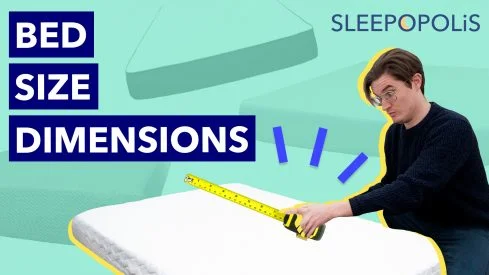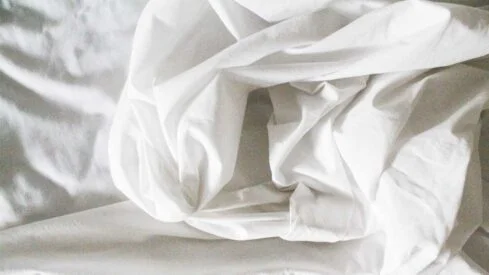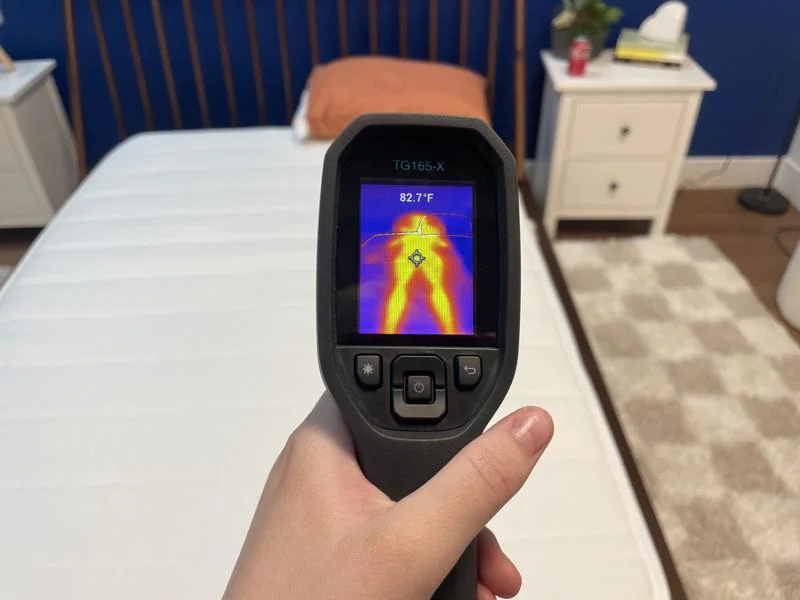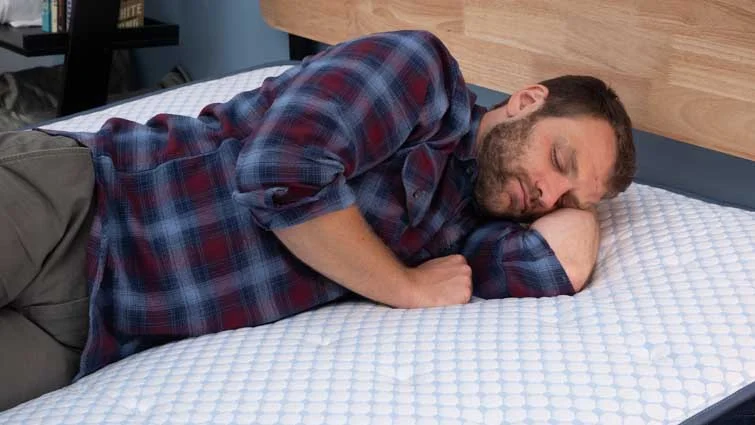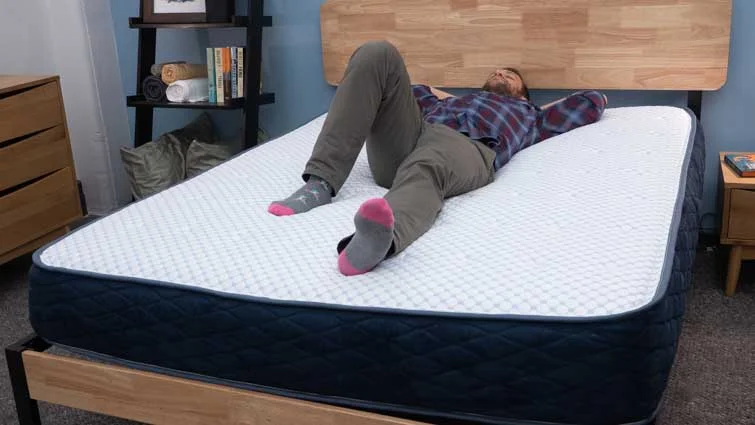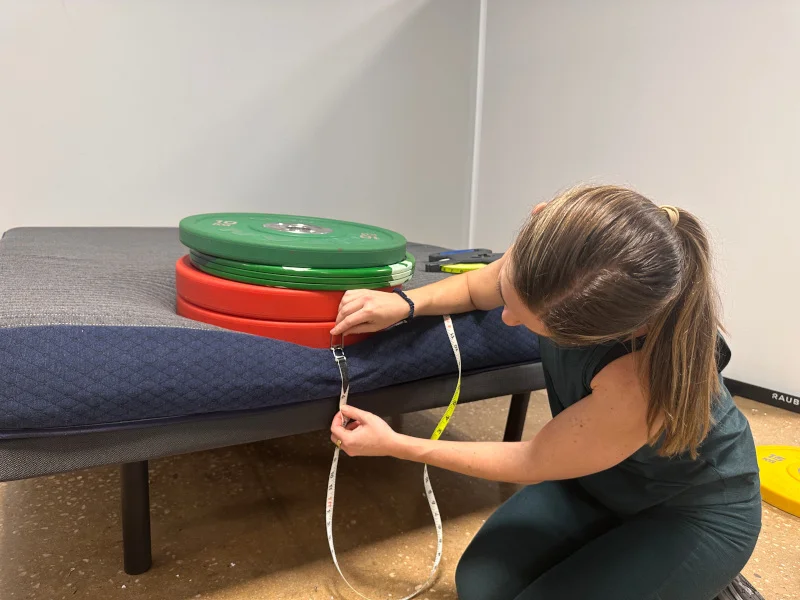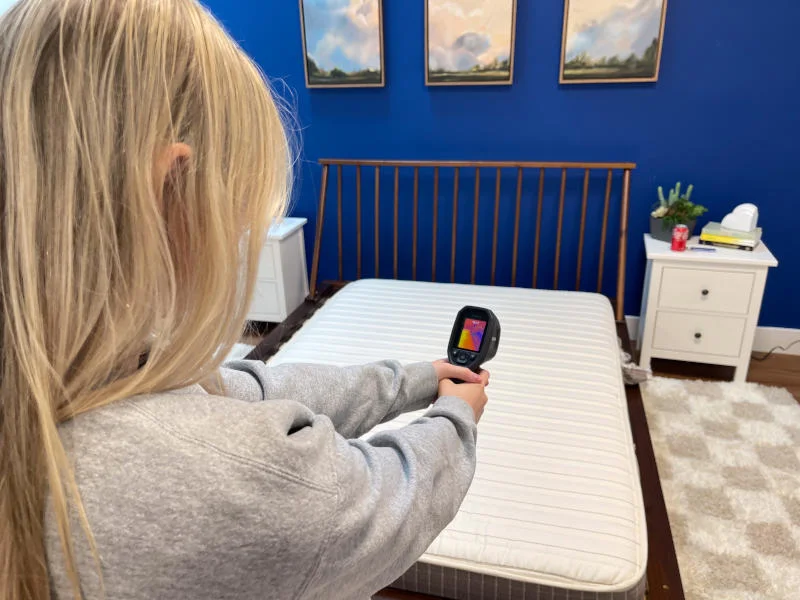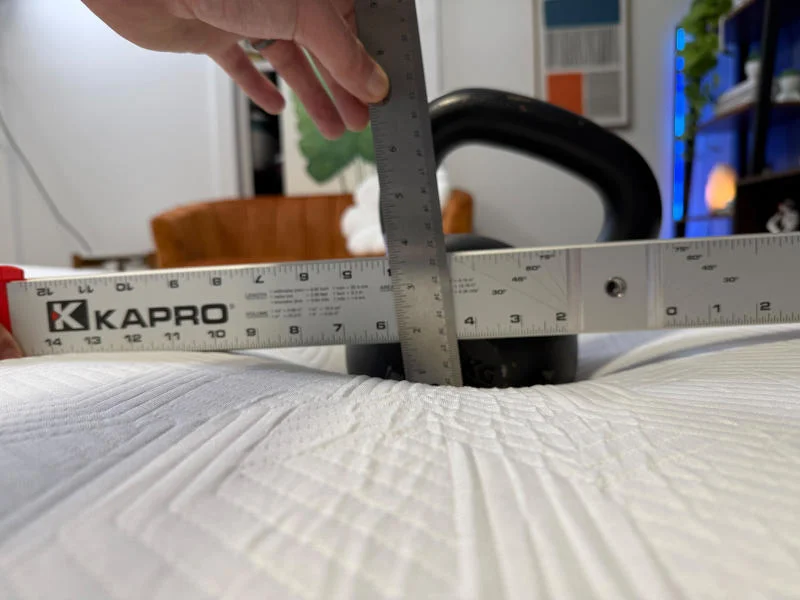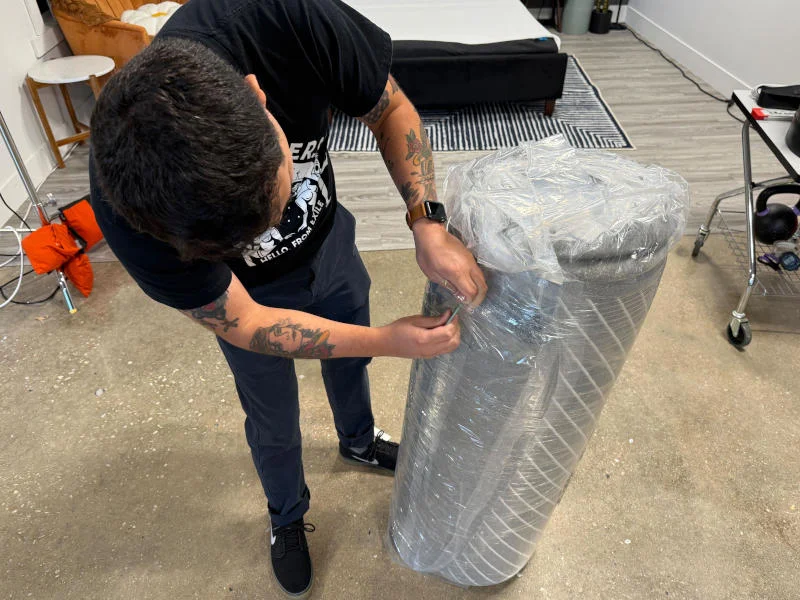Looking to cut costs and save space in the bedroom? A 6-inch mattress might be the answer. These compact beds are great picks for bunk beds, RVs, rooms with low ceilings, and otherwise tight spaces or budgets. The best 6-inch mattresses can make your wallet happy and free up some, but they should also provide comfort, support, and value in equal measure.
To make sure you are getting only top-notch options, our team sought out the best of the best 6-inch mattresses on the online market. Over the years we’ve been in operation, we’ve helped more than 60,000 people find their new favorite mattress, with 15,622 of those satisfied customers in 2024 alone. Our findings are backed by the experience of our sleep experts and input from our Chief Medical Advisor, Dr. Raj Dasgupta.
The following 6-inch mattresses should cater to a wide range of sleepers and fit most every budget.
Best 6-Inch Mattresses
- Helix Kids – Best 6-Inch Mattress Overall
- BB Kids – Best 6-Inch Twin Mattress
- Dreamfoam Essential – Best 6-Inch Memory Foam Mattress
- Brentwood Juniper – Best 6-Inch Mattress for Bunk Beds
- Lucid 6-Inch – Best 6-Inch Mattress for Adults
Disclaimer: Please note that the content in this article is meant for informational purposes only and should not be construed as medical advice or serve as a substitute for seeing a medical professional regarding any sleep problems you may have. Please see your doctor regarding any urgent medical issues.
What I Looked For in the Best 6-Inch Mattresses
Six-inch mattresses are a rare breed and may scream “low quality” to some shoppers, but there are quality beds to be found. To find true gems among the best sellers, we paid special attention to the following categories during our testing and selection:
- Durability – Since 6-inch mattresses are on the thinner side, they should be constructed with high-quality and durable materials. We took a look at what was inside each of the mattresses and how well they held their shape when bearing weight. This is why we consider edge support a metric for measuring durability; if the mattress doesn’t sag when we sit or lie down at the edge, the rest of the bed is likely to hold up over time.
- Pressure relief and support – In the same vein, you’ll also want your 6-inch mattress to be comfortable. “The best way to ensure this is by finding a mattress that balances support and pressure relief,” says Dr. Dasgupta. A supportive mattress will keep your spine aligned, while one with excellent pressure-relieving capabilities allows for cushioning around areas that dig into the bed’s surface, such as the hips and shoulders. We often recommend medium-firm mattresses for this reason, as their balanced profile can fit a variety of sleep styles.
- Value – Most 6-inch mattresses are budget friendly, but you should exercise caution when choosing a bed with the lowest price tag. It’s important to consider the overall value of the bed you’re purchasing. This means that for the price you pay, you should still be getting a quality product that performs admirably. Aside from a bed’s performance, we also factor in the company policies and customer service that come with the mattress, such as any free accessories included, sleep trials, or warranties.
 |  |  | 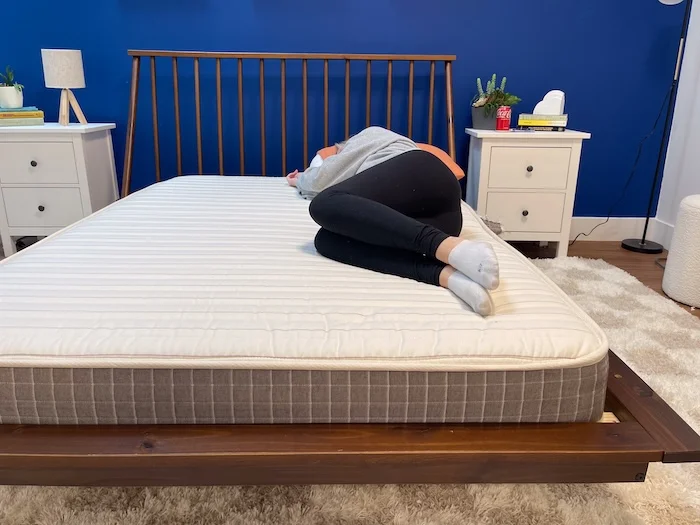 |  | |
| Helix Kids Mattress | BB Kids | Dreamfoam Essential Memory Foam Mattress | Brentwood Home Juniper Kids Mattress | Lucid 6 Inch Mattress | |
| Rating | |||||
| Firmness | Firm: 7.5/10 | Firm: 7.5/10 | |||
| Material | Hybrid | Foam | Foam | ||
| Cooling | — | — | — | — | |
| Best For | Side Sleepers, Back Sleepers, Stomach Sleepers, Hot Sleepers, Kids | Kids | Side Sleepers, Back Sleepers | ||
Helix Kids – Best 6-Inch Mattress Overall
When choosing the best mattress for your little one, you want to pay special attention to quality materials, adequate pressure relief for growing pains, and overall durability for long-lasting support. The Helix Kids checks all these boxes and is entirely tailored towards children between 3 and 12. It’s also made with completely non-toxic materials, earning a GREENGUARD Gold certification. Learn more about the Helix Kids in our video roundup of the best mattresses for kids.
What our tester says:
“What a great option for parents trying to find a mattress that will work for their growing child. I really liked the Helix Kids’ flippable, hybrid design. I found it offered high-quality materials and great support for younger people.”– Bridget Chapman, former senior product editor
BB Kids – Best 6-Inch Twin Mattress
The Brooklyn Bedding BB Kids Mattress is made with firmer memory foam that should offer an ideal amount support for younger back sleepers and side sleepers. It also has some added touches such as gel memory foam for cooling and a stain-resistant cover.
Dreamfoam Essential – Best 6-Inch Memory Foam Mattress
The Dreamfoam Essential is a high-quality budget option, with enough firmness levels, height options, and price points to suit a wide variety of sleepers. We think RV-specific sizes make it especially good for travelers. Learn more in our Dreamfoam Essential video review.
What our tester says:
“When I was on my back my weight felt evenly distributed. I sunk into the memory foam comfort layer just a touch and enjoyed some body-contouring, while the firmer support layer ensured my hips stayed elevated and aligned with my spine.” – Logan Block, former Sleepopolis director of content and mattress tester
Brentwood Juniper – Best 6-Inch Mattress for Bunk Beds
Even though this mattress is designed for kids, it can also work as a guest bed or in a college dorm room, thank to its compact size and affordability. We found it to be comfortable while back sleeping and side sleeping, and were impressed by the strong edge support, especially for a memory foam mattress.
What our tester says:
“Overall, I feel supported on the Brentwood Juniper. I think that kids would find even more support.” – Riley Otis, staff writer and mattress tester
Lucid 6-Inch – Best 6-Inch Mattress for Adults
Overall, this is extremely supportive for a memory foam mattress, offering comfort while back sleeping and stomach sleeping. We also appreciate that it’s a budget option, which makes it a good pick for children’s bedrooms, guest rooms, and dorm rooms.
What our tester says:
“On your side, you don’t get much contouring, but the support is solid. On my stomach, there’s a bit more sinkage, but I still feel lifted.” – Kenny Timper, senior staff writer and product tester
How We Picked and Tested These 6-Inch Mattresses
Though there aren’t that many 6-inch mattresses out there, we made sure to narrow down our search to find the best of the best mattresses. We honed in on beds that were durable and offered a nice balance of pressure relief and support, all while coming in at a reasonable price for the product received.
Durability
“When it comes to looking for a durable mattress, look for beds made with high-quality materials and a construction that includes both support and comfort layers,” says Dr. Raj Dasgupta. “A durable mattress will particularly excel in edge support, a sign that it will hold its shape for years to come.”
With this in mind, we took a look at each of the 6-inch mattresses that arrived in our studio. First, we cut them open to take stock of what’s inside and see whether it matched up with what was advertised on the site. Most of these mattresses are all-foam beds, so we wanted to see firmer foams on the bottom for that essential support, for example.
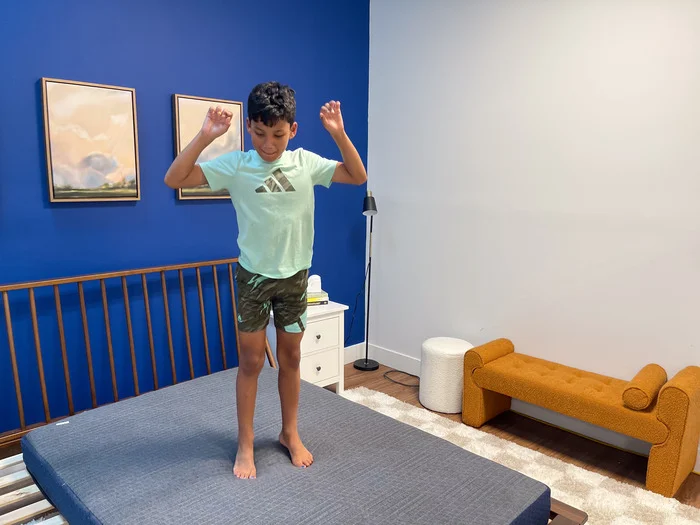
We also took note of the bed’s edge support. Of course, with thinner beds such as these, edge support may lag behind our oft-recommended 10-to-12-inch models. But we still noted how much the mattress collapsed under our weight when sitting or lying down at the perimeter. The less a bed sags at the perimeter, the less likely it is to start showing signs of wear and tear with repeated use. We rate edge support on a scale of 1 to 5, so you can also take that number as a preview of how well your mattress will retain its shape.
Pressure Relief and Support
We’ve tried to drive home the point that you’ll need pressure relief and support in a mattress to ensure your comfort, but what exactly goes into both?
“Pressure relief refers to how well a mattress takes the pressure off parts of the body that dig into the bed’s surface,” says Dr. Dasgupta. “These can be areas like the hips, shoulders, lower back, or neck.” Softer, cushier materials like memory foam or latex are best for pressure relief as they help cradle these areas.
To test pressure relief, we have our testers lie on their backs and sides on the surface of the mattress and share their opinions on how they feel. They note any areas where they feel pressure buildup and ultimately give a rating out of five. Sometimes, this involves using a specialized mat with thermal imaging to record a color-coded outline of the tester’s body, which we can reference for more objective results. We always try to have testers from different weight categories try out the mattress to understand how it will work for all sleeper types.
When it comes to support, we generally look for beds that keep the spine properly aligned in each sleeping position. This means that the mattress coaxes your spine into its natural S-curve, rather than forcing it too straight or allowing you to sink in too far.

To ensure a mattress is supportive, we lie on the bed in each sleeping position to get a feel for how it suits us. Some beds are more supportive than others for preferred sleeping positions or body weights, which we note during testing.
Value
Many 6-inch mattresses are often great bargains. There’s a lot less mattress to offer, so you’re paying for less product — which can be a blessing or a curse. That’s why it’s important to not just consider the price of the mattress, but the overall value of it.
To gauge the value of a mattress, we first examine the quality of the bed’s construction. Our testers want to see high-quality materials like dense foams and sturdy coils. We also consider if the mattress was made with sustainability in mind and whether it contains fiberglass. Furthermore, we look at how it performed across the board in the studio. A bed that performs poorly, even if it’s cheaply priced, isn’t enough to receive the thumbs-up from us.
We also stay on the lookout for long warranties or sleep trials as a sign of confidence in the product. A 365-night trial and lifetime warranty will receive a perfect 5-out-of-5 score for customer service. Easy unboxing or offered white glove delivery are also added perks that can up the bed’s value.
Aside from reading our opinion, you can also do your own research on the retailer’s site, whether it be the brand itself or Amazon. I always recommend you take a look at customer reviews from verified purchases for firsthand accounts. And, of course, take advantage of any sleep trial offered; you can use the time to get a feel for whether the mattress is worth the price you paid, then return it for a full refund.
What to Consider in 6-Inch Mattresses
Outside of the areas outlined above, other, more individualized factors could influence your final purchase. If you’re still unsure of which mattress you want to choose, consider the following to narrow down your options.
Mattress Type
What type of mattress you choose to buy can dictate its overall feel. Some bed types are better suited to certain sleeping styles than others.
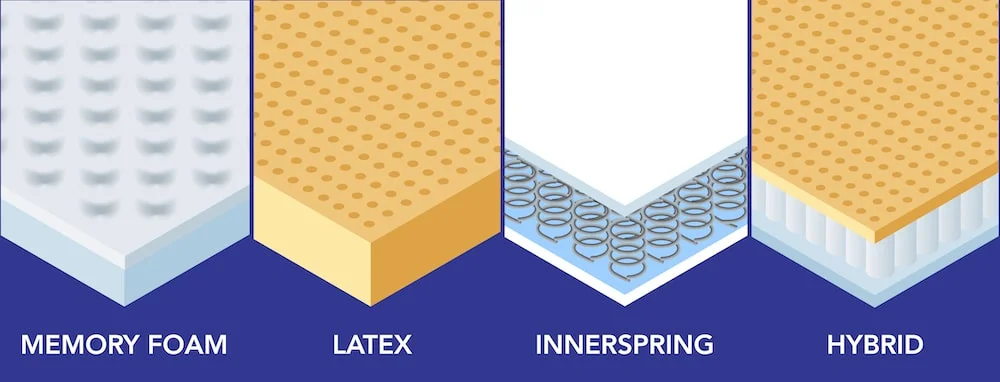
Most 6-inch mattresses are going to be memory foam mattresses. This mattress type is more economical in terms of price and space, as foam layers can be thin yet dense, providing support and pressure relief in a smaller size. Most foam beds are known for their pressure relief, motion isolation, and cushioning feel. However, these beds are often notorious for trapping heat and may not be the bounciest.
Innerspring mattresses are a more traditional mattress type that consists primarily of a coil unit. Because of this, you’re unlikely to see many 6-inch innerspring beds. These beds only feature one thin comfort layer on top of an interconnected coil unit, so their main draw is support and bounce. They’re not often the best choice for cushioning or pressure relief.
A hybrid mattress will combine the best of both worlds. These beds have a coil unit and comfort layers for a balance of support and softness. You’re less likely to see a hybrid mattress than an all-foam model, but there are some on this list, like the Helix Kids. Hybrid mattresses are some of the most versatile, with their feel changing depending on what is used in their comfort layer.
You’re unlikely to find a 6-inch latex mattress, but on the off-chance that you do, these beds are made with naturally derived latex, a uniquely buoyant material. It’s a bit more breathable than foam but still offers a similar pressure relief. Latex is a great pick for the eco-conscious shopper who may want an organic mattress. However, these beds are often very expensive.
Body Type and Sleeping Position
Studies show that medium-firm mattresses are generally the best for maintaining a comfortable sleep posture, lowering the risk of discomfort or pain. However, it isn’t set in stone. “Your preferred sleeping position and how much you weigh have a direct effect on your ideal firmness,” Dr. Dasgupta notes.
- Side sleepers are the most common sleeper type and require pressure relief around the hips and shoulders, which dig into the mattress. Therefore, some side sleepers may do best on a medium to soft mattress.
- If you sleep on your back, the medium-firm recommendation may work for you. This sleeper type needs a balance of softness and support to keep the spine aligned while filling in the gap in the lower back.
- Stomach sleepers are in a precarious situation because this sleeping position can increase strain on the lower back, potentially causing discomfort. That’s why we recommend a firm mattress to keep the hips lifted.
- If you switch between multiple or all sleeping positions, you’re a combination sleeper. You might want a bed with some bounce or response, which will make it easier to move around on the surface of your mattress.

Your body weight also influences the above recommendations, so be sure to adjust your preferences accordingly. Sleepers over 230 pounds may experience more sinkage than expected on mattresses, leading to discomfort as they “bottom out” on too-firm support layers. We often recommend that these folks go for firmer, more supportive mattresses. On the other hand, sleepers under 130 pounds may have the opposite problem: To better sink into a mattress, they may want to opt for something on the softer side.
Many of the beds on this list are also geared toward children, so you’ll want to take that into account if you’re purchasing a 6-inch mattress for your guest room.
Extra Mattress Features
Some mattresses offer specialized features to appeal to certain sleeper types. There might be cooling gel memory foam for temperature regulation, zoned support for back pain, or a cushy, slow-moving pillow top for less motion transfer. Extra features can enhance your overall comfort at night, leading to a better sleep experience.
Unfortunately, you can only pack so much into a 6-inch mattress. If you’re looking for something with bells and whistles, you may have to upgrade to thicker beds. Or you can add a mattress topper for added height or to address other concerns you might have, such as more pressure relief or firm support.
FAQs
Will a 6-inch mattress be comfortable?
A 6-inch mattress can definitely be comfortable. The mattress needs to have both a strong support layer and softer layers on top to relieve tension at pressure points. Look for 6-inch mattresses with a medium to medium-firm feel, as these will appeal to the widest range of sleepers. Some sleeper types may want a thicker mattress. For example, if you sink too far into your current mattress, you may need something taller and more supportive.
Is a 6-inch mattress enough for a couple?
A 6-inch mattress can work for couples looking to save on cash and space. We would first recommend opting for a larger mattress, like a full-size or queen-size, which can comfortably accommodate two people. If you or your partner is of a larger size, you might fare better on a thicker mattress, however.
What mattress thickness is best?
We usually recommend mattresses that fall around the 10-inch-thick mark, which is also fairly typical on the online mattress market. However, some sleepers may do better with a thicker or thinner mattress depending on their individual needs or their sleeping environment. Thicker mattresses can be better for folks with mobility concerns or those who weigh over 230 pounds. Thinner beds can work better for younger sleepers, budget shoppers, or ones that are going in RVs or bunk beds.

